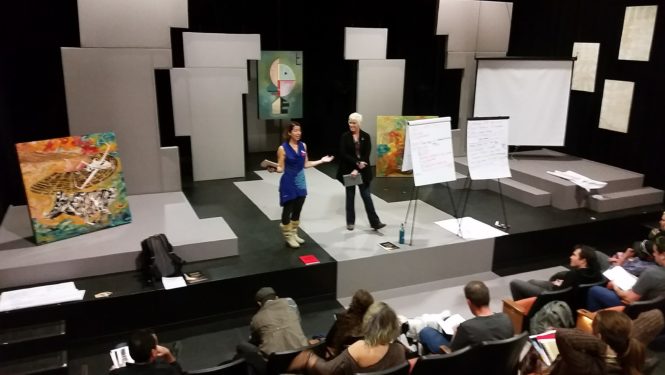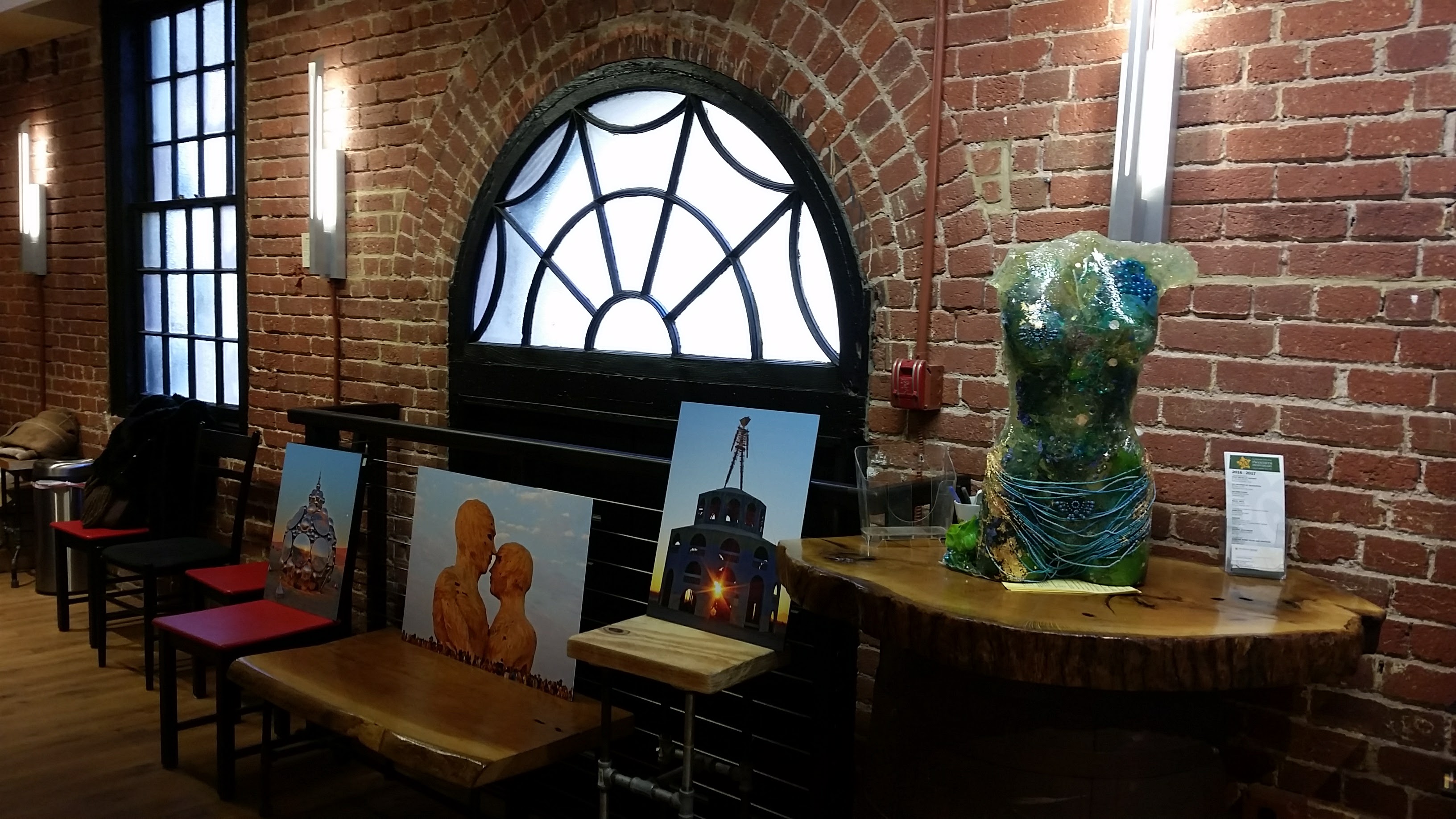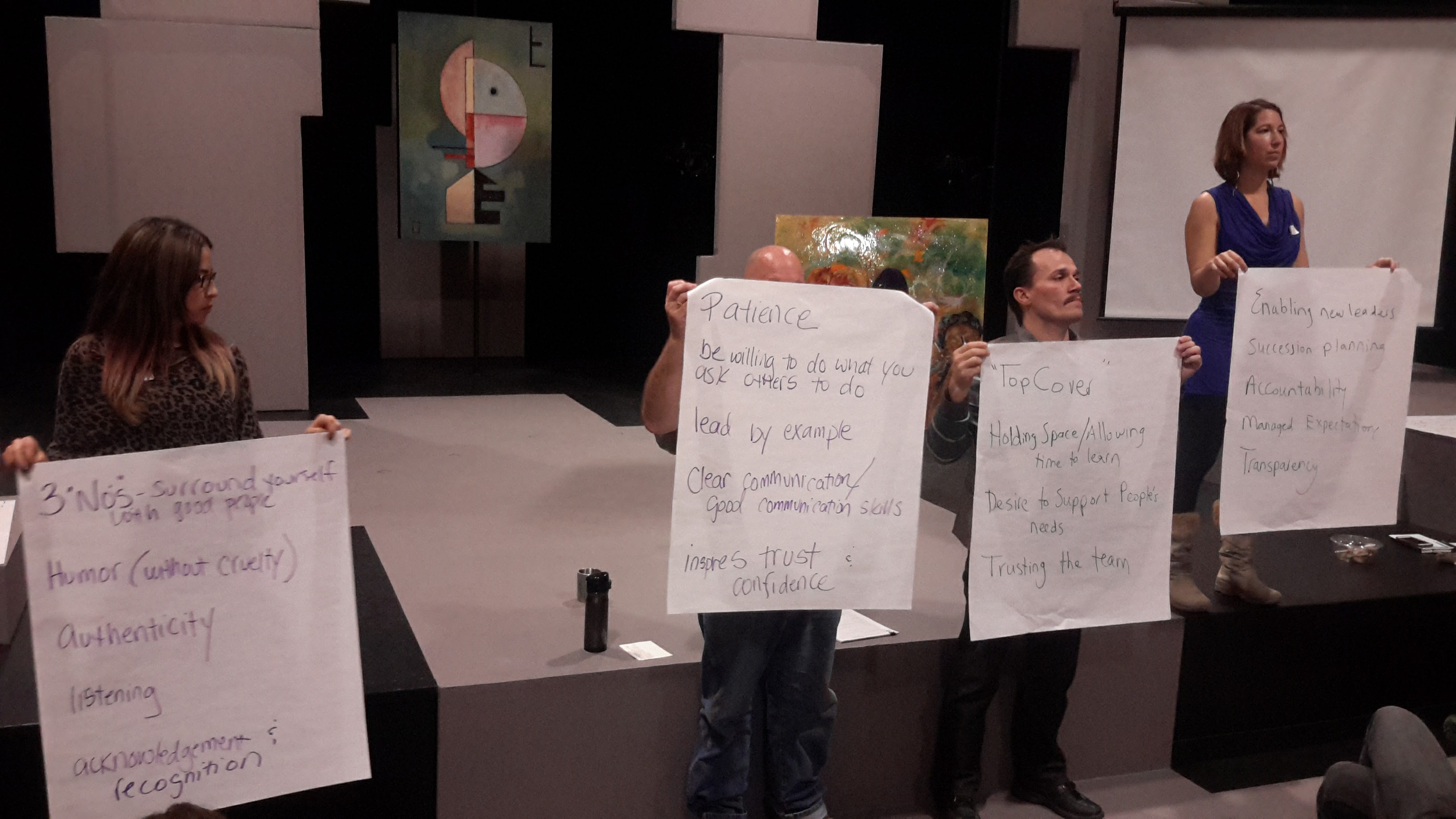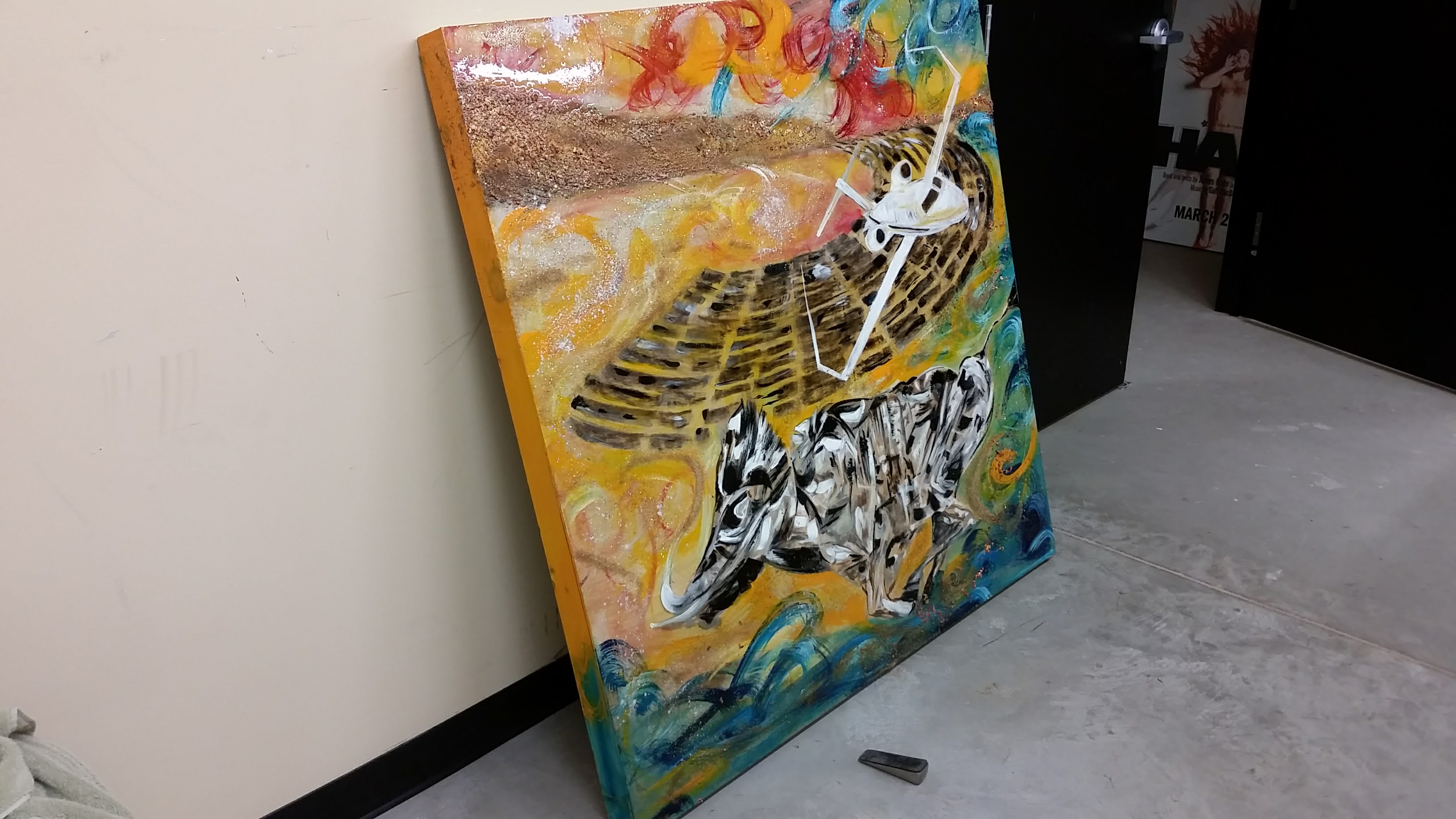The first ever Mid-Atlantic Leadership Conference, which brought together community leaders from across the region, was months in the making. Timed to coincide with the second annual Catharsis on the Mall, we hadn’t taken into account how the outcome of our country’s presidential election might affect our gathering. I say this because, to be candid, everyone was already drained and raw before the first day even started. But start it did, and so did the conversations, and the work.
Inspired by the Southeastern Leadership Roundtable, 45 Regional Contacts, community leaders, and other active members of the community gathered in our nation’s capital. Those in attendance represented Burner communities and events in Delaware, Maryland, New Jersey, New York, North Carolina, Pennsylvania, Virginia, West Virginia, and Washington, DC. We also had attendees from Burning Man HQ join us. For two days we set up camp in a perfect space for our merry band, the Keegan Theatre. The goal of these gatherings is to bring together leaders from communities across the region to share experiences and to discuss the issues that come up in our local groups.
The content was tailored to the needs of our region’s communities. The topics ran the gamut, with sessions on Defining and Building Community, Consent, Radical Vulnerability, and updates from Burning Man Project staff. We had some tough conversations, asked hard questions, and often left with even more questions than answers. In getting updates from BMHQ, I asked how the larger topic of diversity and inclusion was informing and affecting the Regional Network, if at all. The response was one that I partially answered myself, in that the conversation and work can only move forward on a national level as much as each region and local community pushes things forward on a local level.
Consent was also an intense conversation. I took two main themes to heart: how do we help orient newcomers to the community about the issue, and how do we respond to reported consent violations in a confidential and responsible manner. The issue is much broader than consent in intimate and physical situations. Even during our opening session, one of the first items we started with was asking if attendees would or would not be okay with photos and videos being taken during the conference, by organizers as well as each other. Consent can be particularly nuanced because of the participatory nature of many of our events. But this work is a reminder that participation is not mandatory. In addition to an invitation being extended, it needs to be accepted as well, and ultimately this means that no is always an acceptable response, even when offering something as simple as a hug.
Fortunately, we had members of Transformus’ 11th Principle project on hand, as well as some Theme Camp leads, to help provide some perspective and share their experience. In DC, our Regional Contacts and community leaders, including folks from Theme Camps and Burner group houses, released our own Consent Culture statement just last year, so our work in this as a community is still relatively new. But we’re committed to doing hard work, for the safety and integrity of our community.
Having Sauce from Burning Man’s Regional Network Committee present certainly helped emphasize that sense of ownership from doing the work for our community. This work isn’t something Burning Man Project is telling us when or how to do. Having the space to connect with and learn from peers and colleagues in our region was just as, if not more, valuable than anything Burning Man staff could have shared. And even that was a valuable example of leadership from Burning Man Project, providing the support and network to organize the conference, but then stepping back to let the conversations happen among the people who would be doing the work.
At the end of the day, hosting community gatherings like this are not the goal, but a means to an end. The goal is doing the work that our community needs, after the conference. We leave these hopefully having learned how to work smarter and not harder, which is not to say that this isn’t hard work we’re undertaking. And however difficult the work can be, it needs to be sustainable. On top of that, as leaders, we need to make sure we’re not just taking care of our community but ourselves as well. Because now, more than ever, it’s time to get to work.





Bravo and thanks for sharing a snapshot of the conference. Fabulous!
Report comment
Has there been any options brought up for photographic consent? I was thinking something along the lines of green or red stickers for people who choose to wear a visual cue that expresses their consent, or lack thereof, for being photographed. I would like to find a solution that lets the individual have the choice to be responsible for making their wishes clear, if it is important to them.
Report comment
Hey Pam. Great question! I think regarding photographic consent, the challenge with having a visual cue in lieu of a conversation might be best summed up by an exchange I actually had with one of the attendees.
Their response when being asked for consent to have their photo taken was it depends. I won’t say regarding what, but the reason I bring that up is that often times consent is more situational than absolute. And that people have the right to change their mind about consent at any given time about anything.
Logistically, even something that can be as simple as sticker can be complicated. What if people don’t wear it? What if it falls of their clothes? What if the photographer can’t see it from their angle? What if the photographer simply doesn’t know about the sticker method? And if there’s a sticker method for photographic consent, should there be stickers for other kinds of consent? Will this become the new hanky code for Burners?
I would say that consent at the end of the day is something that should be important to all of us. And while it might seem onerous, simply asking and starting the conversation, and cultivating a culture that encourages and supports an ongoing dialogue, is probably the easiest solution to address this.
I will say a sticker that did seem to address consent effectively was used at the BDSM Folsom Street Fair, and simply stated “Ask First”.
Report comment
Comments are closed.